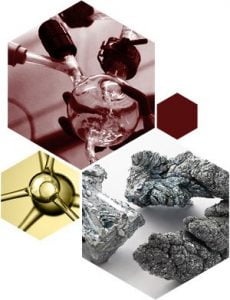
Lead (II) Acetate Trihydrate
Properties
- We can offer items in bulk or custom. For other quantities or purities, please request a quotation.
- All prices are subject to change.
Related Products
Information about Lead (II) Acetate Trihydrate / CAS 6080-56-4
Lead (II) Acetate trihydrate (Lead (II) diacetate trihydrate, Pb(C₂H₃O₂)₂·3H₂O) is a widely studied inorganic compound with significant applications in chemical synthesis, materials science, and environmental research. It is a colorless or white crystalline solid that is highly soluble in water. Due to its reactivity and coordination chemistry, it is a key precursor in the synthesis of Lead-based compounds, making it valuable for research and industrial applications.
One of the primary applications of Lead (II) Acetate trihydrate is for the development of Lead-based perovskite materials for optoelectronic devices. Research has demonstrated its role in fabricating high-quality perovskite thin films with improved structural and optical properties, which are critical for solar cells, LEDs, and other semiconductor applications. Lead (II) Acetate trihydrate is also used in the preparation of Lead halide perovskite nanocrystals, contributing to advancements in light-emitting and photovoltaic technologies.
In analytical chemistry, Lead (II) Acetate trihydrate is employed in redox reactions and metal complexation studies. It plays a role in testing for sulfide ions and has applications in developing lead-based coordination complexes. The compound’s ability to modify graphite felt has been explored to create lightweight electrodes for Lead-acid batteries, improving battery performance and efficiency.
In materials science, Lead (II) Acetate trihydrate has been investigated for its thermal decomposition behavior, offering valuable data for applications in catalysis and material processing. The compound has also been studied in solvent-dependent synthesis approaches for Lead (II) complexes, influencing structural and electronic properties that are relevant in coordination chemistry and advanced material design.
- Kong, W., Wang, G., Zheng, J., Hu, H., Chen, H., Li, Y., … & Cheng, C. (2018). Fabricating high-efficient blade-coated perovskite solar cells under ambient condition using lead acetate trihydrate. Solar RRL, 2(3), 1700214.
- Zhang, Y., Ma, Y., Shin, I., Jung, Y. K., Lee, B. R., Wu, S., … & Park, S. H. (2020). Lead acetate assisted interface engineering for highly efficient and stable perovskite solar cells. ACS Applied Materials & Interfaces, 12(6), 7186-7197.
Safety
- H360 May damage fertility or the unborn child.
- H373 Causes damage to organs through prolonged or repeated exposure.
- H410 Very toxic to aquatic life with long lasting effects.
- P202 Do not handle until all safety precautions have been read and understood.
- P260 Do not breathe dust/fume/gas/mist/vapours/spray.
- P273 Avoid release to the environment.
- P281 Use personal protective equipment as required.
- P308+P313 IF exposed or concerned: Get medical advice/attention.




